Designing Generative AI Solutions: Key Lessons Learned
Khulan Davaajav
Global AI Content Manager
Hussain Chinoy
Gen AI Technical Solutions Manager
Generative AI is transforming the way we interact with technology. At Google Cloud, our Applied AI Engineering team has shaped the design and development of generative AI solutions for Generative AI for Marketing, Customer Experience Modernization, and Open Data QnA (NL2SQL), among others. Throughout this process, we've gained valuable insights that we believe can help others to successfully and responsibly design and implement these cutting-edge technologies. In this blog post, we'll share valuable lessons learned with three overarching design principles:
-
Offer Frictionless Experiences: Design interactions that are intuitive, streamlined, and minimize any barriers to use.
-
Build Trust Through Transparency: Explain AI's role in the user journey. Be open about the system's capabilities and limitations.
-
Prioritize Your Goals: Determine whether you aim for enhanced engagement, increased conversion rates, or something else entirely.
Offer Frictionless Experiences
Indicate what action is being performed by AI or what content is being generated by AI
Openly communicating AI’s role in the user experience builds trust and empowers users. Transparency sets realistic expectations and prevents confusion or feeling misled. By clearly signaling when AI is involved, users can develop an accurate understanding of the system and how best to interact with it.
Recommendation:
-
Implement clear visual cues, such as icons, color coding, or text labels, to distinguish AI-generated content or actions.
-
Offer progressive disclosure mechanisms, allowing users to request more detail about how a particular output was generated.


Example of AI icons
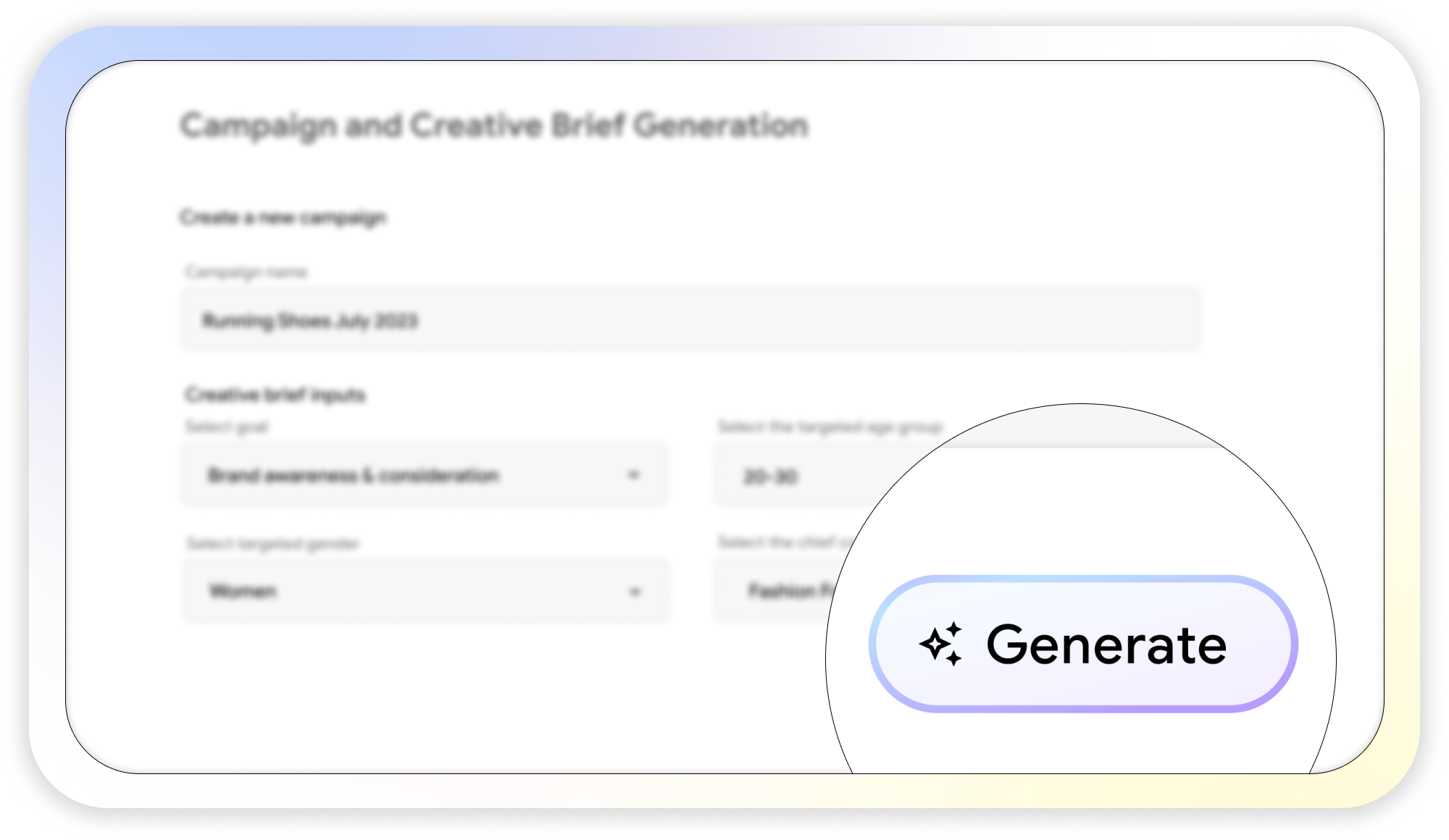

AI Icon in use (Gen AI for Marketing)


Content generated by AI (Gen AI for Marketing)
In our Generative AI for Marketing code example, we’ve provided symbols to indicate when content is being generated by AI as well as providing the SynthID watermarking symbol for generated images as shown above.
Provide Example Prompts to guide user
Starting from scratch can be intimidating. Examples give users a jumping-off point, sparking creativity and demonstrating AI's capabilities.
Recommendation:
-
Offer diverse examples categorized by task, catering to different experience levels.
-
Regularly update examples to reflect the AI model's evolving abilities.
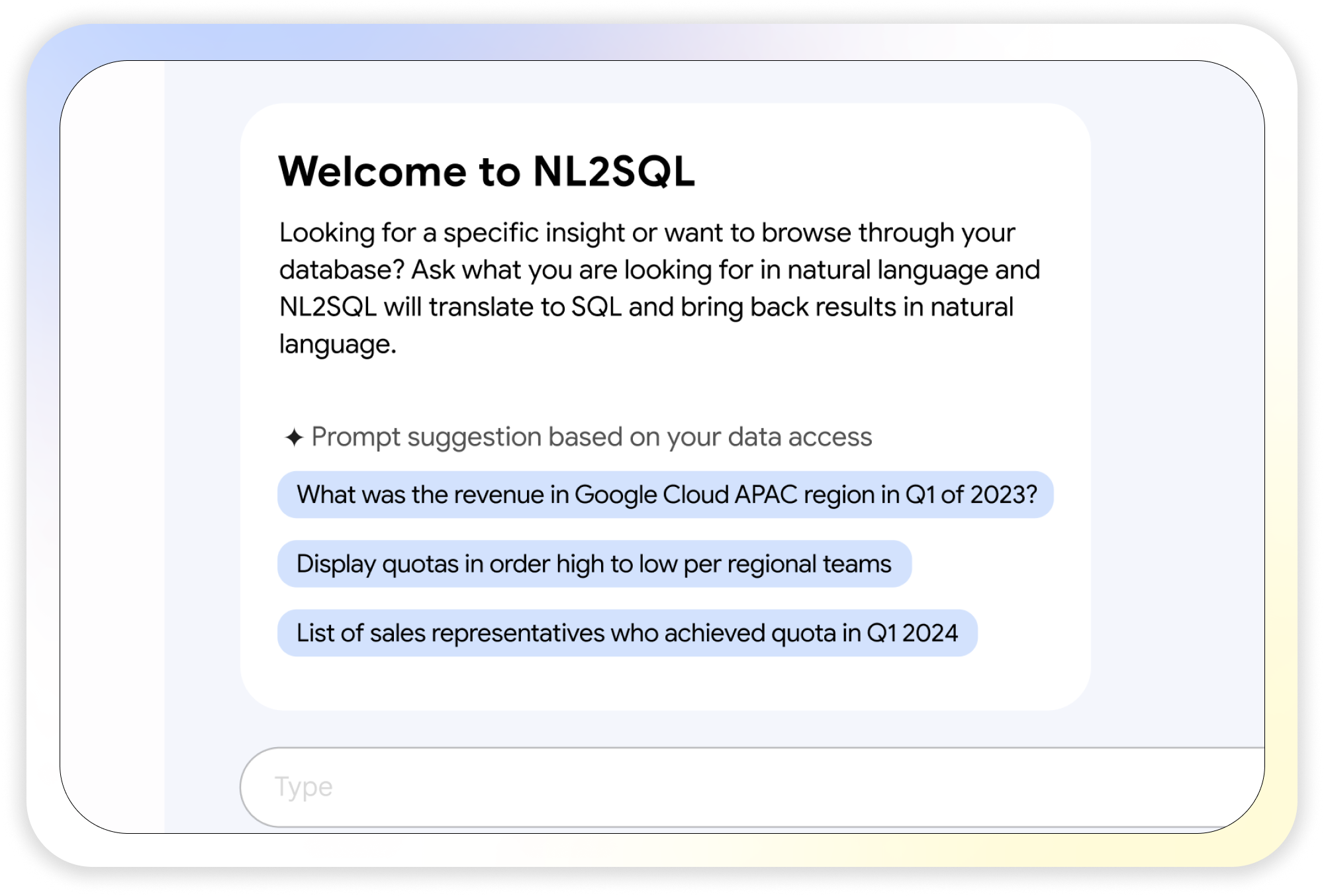

Here we show some generated example questions to ask via Open Data QnA
Design for Actionable AI experience
Businesses expect AI to drive efficiency and tangible improvements. Actionable results lead to a better return on investment and a faster learning loop.
Recommendation:
- Make it instantly clear how users can act on the insights AI generates. Focus on smoothly integrating with existing workflows.
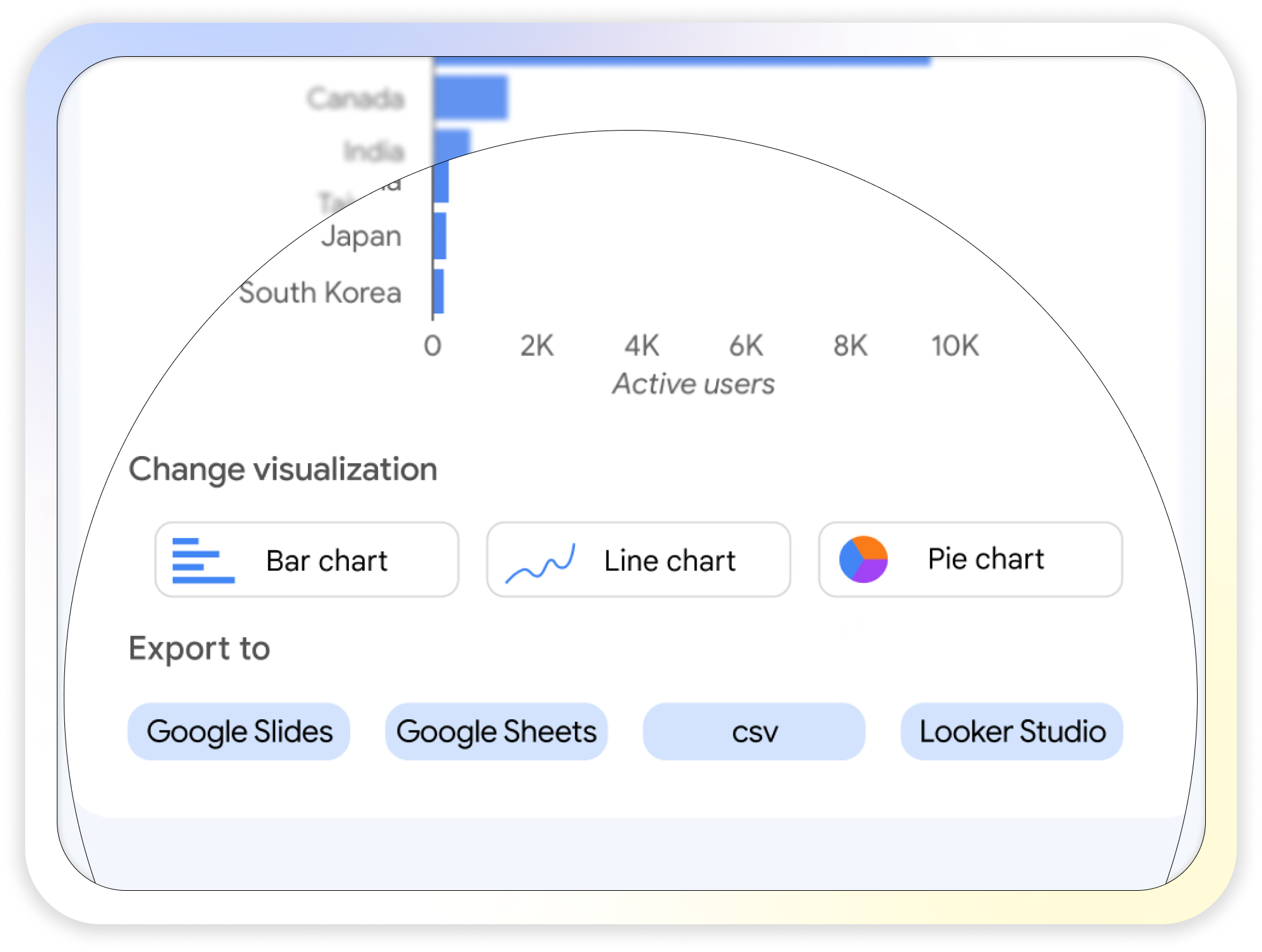

Export option for results
Allowing the user choices in actions to take is another way to allow feedback.
Build Trust Through Transparency
Explain the Reasoning Behind AI Outputs
Users should be able to understand how a generative AI tool came to its results. This fosters trust and makes the process more collaborative.
Recommendation:
-
Highlight key factors that influenced AI's output.
-
Use visualizations to represent AI's decision-making.


For our Open Data QnA (Natural Language to SQL) examples, we provide explanations as well as visualizations on how the natural language query was translated into SQL for inspection.
Include Data Sources
Citing sources increases reliability and enables users to trace the origin of information, which is essential for fact-checking and avoiding misinformation.
Recommendation:
-
Embed citations directly within generated content.
-
Provide a list of referenced sources.
-
Highlight specific passages from sources that informed AI's response.
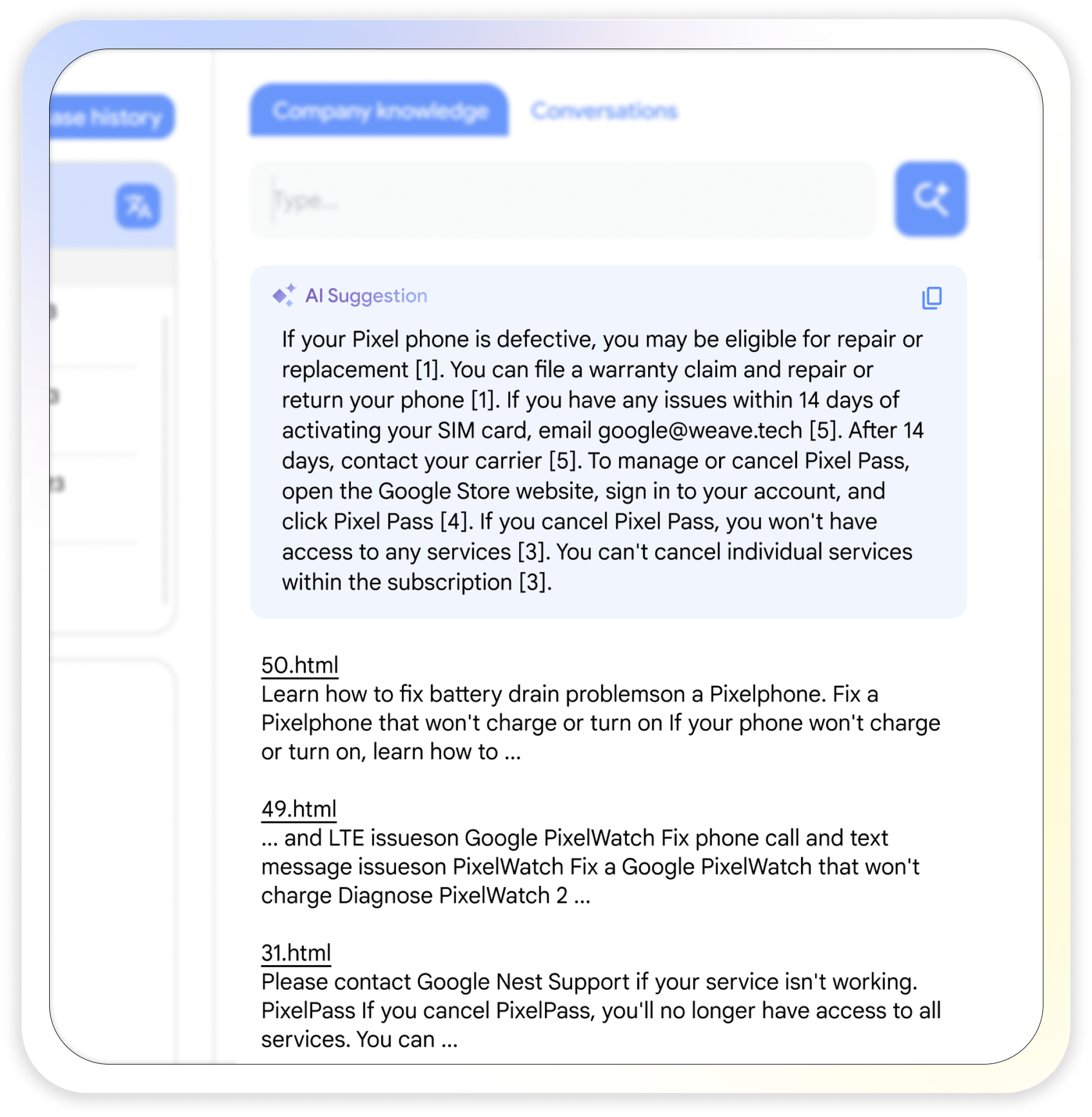

AI suggestion with linked sources
This example from Customer Experience Modernization shows an internal employee proactive search agent citing sources to both have the right length of information in the summary while allowing people to research further.
Utilize Personalization Carefully
Personalization tailors experiences to individual users. Done right, it helps users discover unique and relevant options. However, it’s essential to balance personalization with exploration and ethical considerations. Especially now with Gemini 1.5’s context window, greater degree of personalization can be achieved.
Recommendation:
-
Use data responsibly, ensuring user privacy and control by collaborating with experts or relevant teams within your organization to verify that you are handling data appropriately and in line with existing or forthcoming regulations.
-
Strike a balance between personalization and serendipitous discovery.
-
Elicit explicit feedback to refine personalization over time, fostering a sense of collaboration.
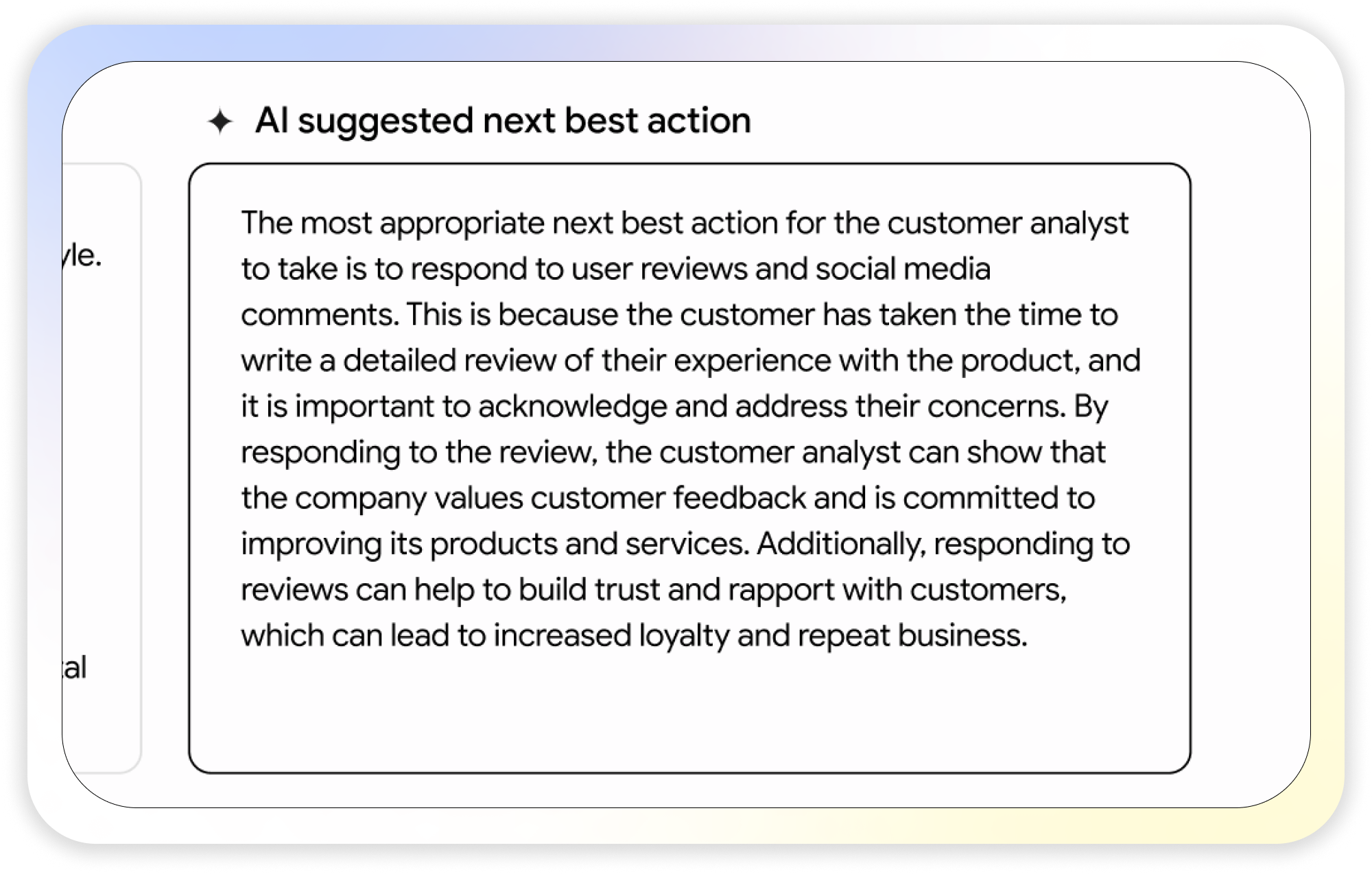

AI recommending what’s the next best action for real human customer service agent (Customer Experience Modernization)
Explaining actions taken as well as incrementally adding new generative features allows users to experience personalized technology in a calibrated manner
Prioritize Your Goals
Balance Intent vs. Exploration
The best generative AI experiences can balance structured task completion with open-ended exploration. Here's how to decide between an intent-focused vs. browsing-oriented design:
-
Intent-Focused: When users have a clear goal (e.g., "Write a marketing email about our new product" or "Summarize this news article"), provide direct pathways for them to express that intent. Augment familiar patterns (like search bars) with conversational capabilities for streamlined input.
-
Browsing-Oriented: If a user's goal is less defined (e.g., "Get ideas for a birthday card" or "Help me brainstorm creative project concepts"), structure the experience around discovery. Offer prompts, suggestions, and the ability to refine results iteratively.
Recommendation:
- Incorporate both intent-driven and browsing-based modes. This way, users can use the tool in ways that best suit their immediate goals.


Intent & browse based view (Customer Experience Modernization)
In our Customer Experience Modernization code samples, we have a generative search experience that expands into a conversational mode, allowing people to follow up and experience a rich palette of interactions beyond text and keywords.
Collaborate with AI for better user experience
User feedback is the lifeblood of generative AI improvement. Providing mechanisms for users to guide AI's behavior helps empower them while offering crucial data for model refinement. Anticipating when you expect users to have feedback provides an indication to the user that you intend to be accountable for potential errors and plan to have a way to correct them. Define your expectations for errors and failures and make sure that error information is explanatory and allows the user to provide feedback. All whilst you provide transparency around data collection & handling.
Recommendation:
-
Implement intuitive feedback mechanisms: Offer simple ways for users to provide input, such as thumbs up/down, ratings, or short comments.
-
Tie feedback directly to AI's output: Allow users to provide feedback in the context of a specific result.
-
Show users how their feedback has improved AI's responses: Demonstrate the impact of their contributions to encourage continued engagement in their next interaction
-
Transparency around data collection: Clearly explain how user feedback will be collected, stored, and used to improve AI model. Respect user privacy and offer choices whenever possible.
-
Error Handling: Proactively acknowledge that errors may occur. Provide ways for users to report issues and offer alternative solutions or resources if AI cannot complete a task.
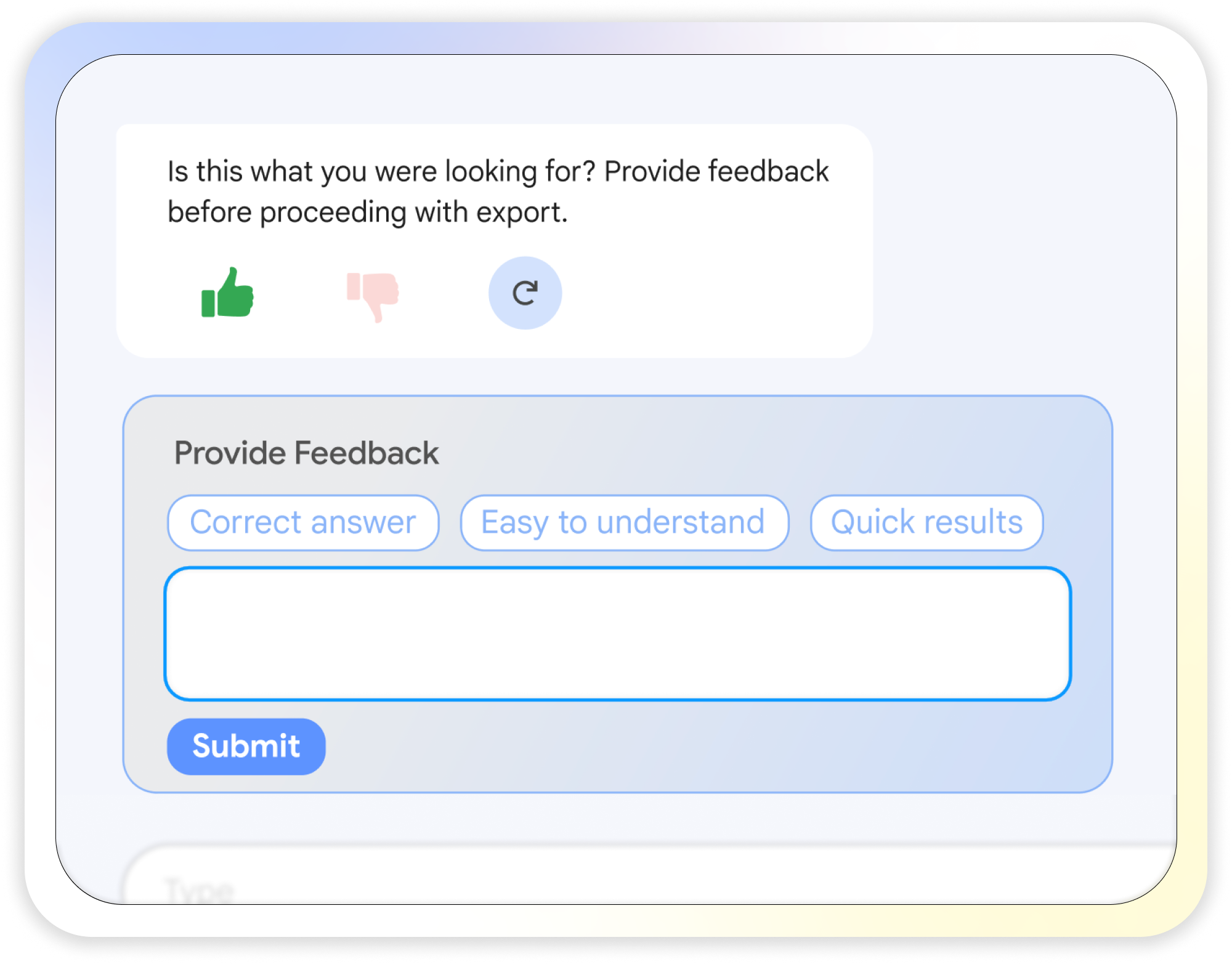

Compulsory feedback that enables error feedback
Conclusion
Generative AI holds immense potential, but its success depends on thoughtful design, especially as generative AI capabilities are evolving. By prioritizing transparency, user autonomy, explainability, actionability, personalization, and continuous feedback loops, we can create and continue to incrementally update generative AI solutions that are trustworthy, empowering, and genuinely beneficial to users and businesses alike.
For more information, we encourage you to visit Google’s People + AI Research guidelines and our Responsible AI website. Read more about our code samples in Code samples to get started building generative AI apps on Google Cloud.



